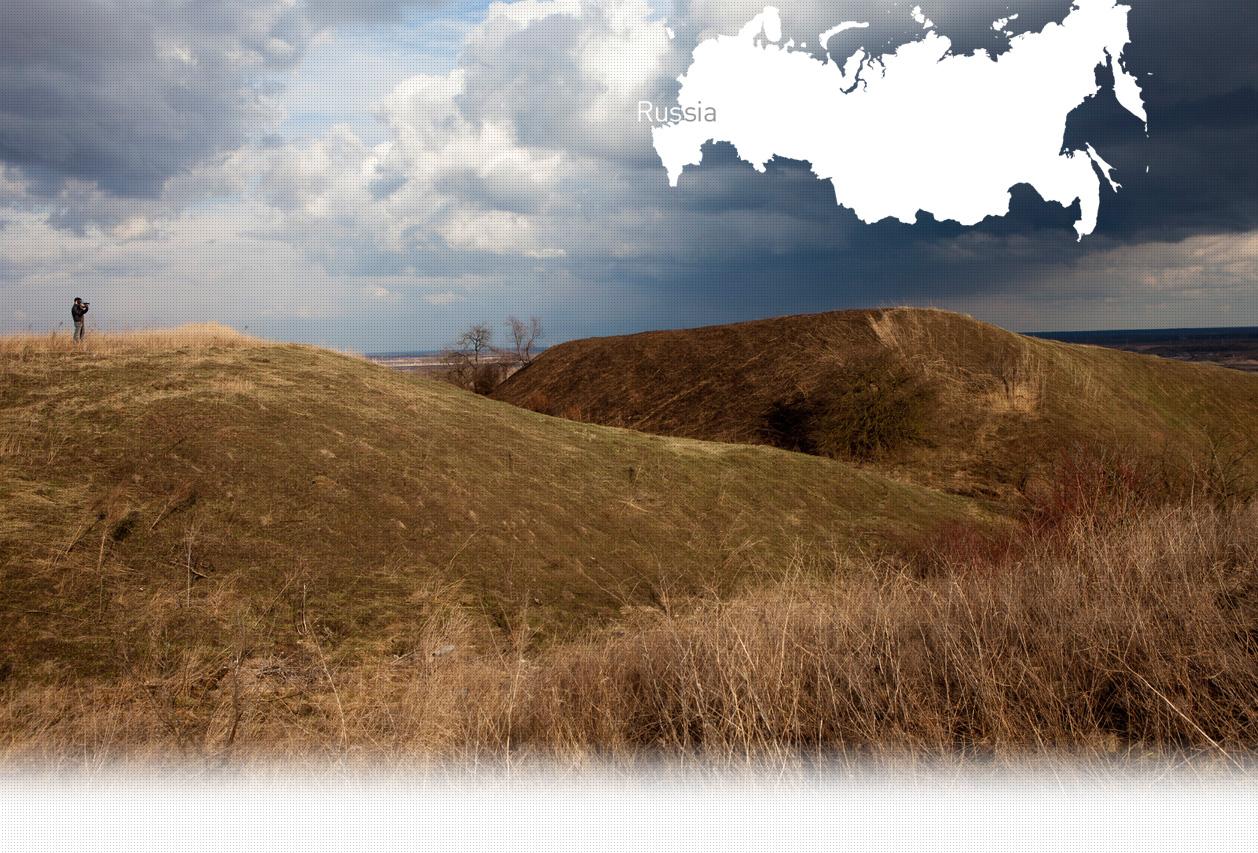

2 Killing site(s)
Nadezhda B., born in 1923: “I was arrested on September 1st 1942 and taken to the camp. My mother went to Vyazma where there was another POW camp. My brother was detained there and my mother went to bring him home. The Germans released prisoners that were claimed by their families.
I was imprisoned in the camp because I’d been denounced. I remember that the Komsomol members forced us to go to nearby villages and distribute propaganda flyers. When I went to a village located about 20km away, a local woman denounced me. I was arrested at home and taken to the camp. After a 12-day detention, I was summoned for an interrogation, during which an SS man asked me about my parents. I told them that my father was judged and convicted in 1937 for ‘anti-Soviet agitation’. When they heard that, they released me immediately.” (Witness n°911, interviewed in Dorogobuzh, on August 22nd 2019)
In one of the town’s camps, such as the one on Karl Marx street, as well as in the other camps in the district of Dorogobuzh, thousands of civilians were detained alongside POWs. Almost every day, dozens of innocent people, ill and wounded, elderly people, women and children, were taken to the anti-tank ditch where, after being humiliated and tortured, they were shot. The condemned were brought from the nearby villages and towns towards the execution site in black canvas covered trucks. They were tied up and, no matter the season, barefoot and undressed, wearing only underwear. German soldiers, who were there to carry out the execution of the condemned people were brought in the truck’s trailer. Soviet citizens were shot in groups of 30-40 people, or even more. All the groups were buried in the same mass grave.
In the town of Dorogobuzh, the House of the Handicapped had existed for a while under government administration. 70 handicapped men and women resided there. During the first months of the occupation, the House of Handicapped continued to sustain itself using the farmlands and cattle they owned. In July, the German invaders completely looted the House of Handicapped. […] Under the pretext of an eventual transfer of the inmates from the Charity House to Smolensk, [the Germans] took the inmates from the House of Handicapped. They had been divided into two groups beforehand, and were taken to the anti-tank ditches where they were shot. […] Similar shootings were conducted in the Yamskiy ravine, at the Pokrovskoye cemetery and other places of the town. In the “Yamskiy Ravine” the four members of the Borok Jewish family was shot in 1942, along with other Jewish families. Furthermore, brutal abuse, stabbing, the gouging out of eyes, etc., preceded the shooting. […]” [Act d,rawn up by Soviet Extraordinary State Commission (ChGK) on September 10th 1943; GARF 7021-44-623]
Dorogobuzh is located 80km (51miles) east of Smolensk. The first records of a Jewish community settling down in the town go back to the mid-17th century. In 1926, 231 Jews resided in the town. According to testimonies, the majority of them lived in the centre. They owned shops and mainly lived off small scale trade. There were many artisans among the Jews as well, such as hairdressers, shoemakers, and tailors. On the eve of the war, 122 Jews remained in the town making up a little over 1% of the total population.
Dorogobuzh was first occupied by the Germans on October 5th 1941 and liberated by the Red Army on February 15th 1942. It was reoccupied on July 7th 1942 and remained under German authority until its liberation in September 1943. During the first days of the occupation, 96 POWs were murdered in anti-tank ditches. The extermination process of the Jewish community is rather complex, as it was not only the Jews who were exterminated, but also members of the non-Jewish civilian population, and POWs. There are several execution sites throughout the town and on its outskirts.
Shortly after the occupation, several camps were established. One was located in the orphanage building, another one in the stables located on the territory of the former sovkhoz ‘Frunze’. The local Jewish and non-Jewish population was detained there alongside the POWs. The camps were guarded and it was forbidden to leave its territory. From time to time, inmates were taken to the anti-tank ditches and shot. The Jews of Dorogobuzh were shot to in 1942 in the Yamskiy ravine, where the anti-tank ditches were located. Before being shot, the victims were tortured. Unfortunately, the field research conducted by Yahad - In Unum was unable to find out more about the executions of Jews and identify the exact timeframe of the murders.
Do you have additional information regarding a village that you would like to share with Yahad ?
Please contact us at contact@yahadinunum.org
or by calling Yahad – In Unum at +33 (0) 1 53 20 13 17